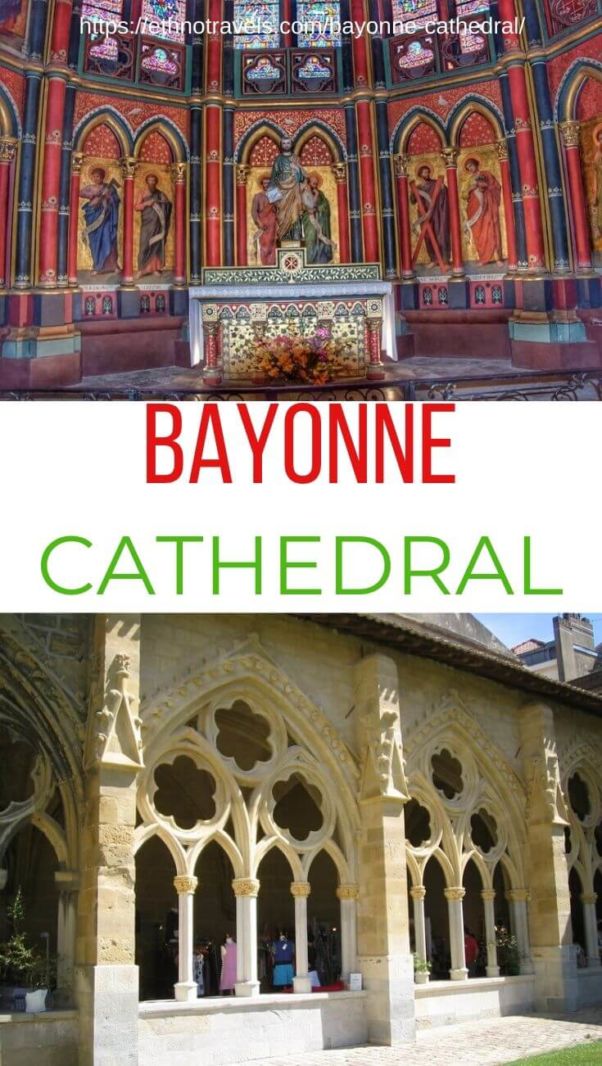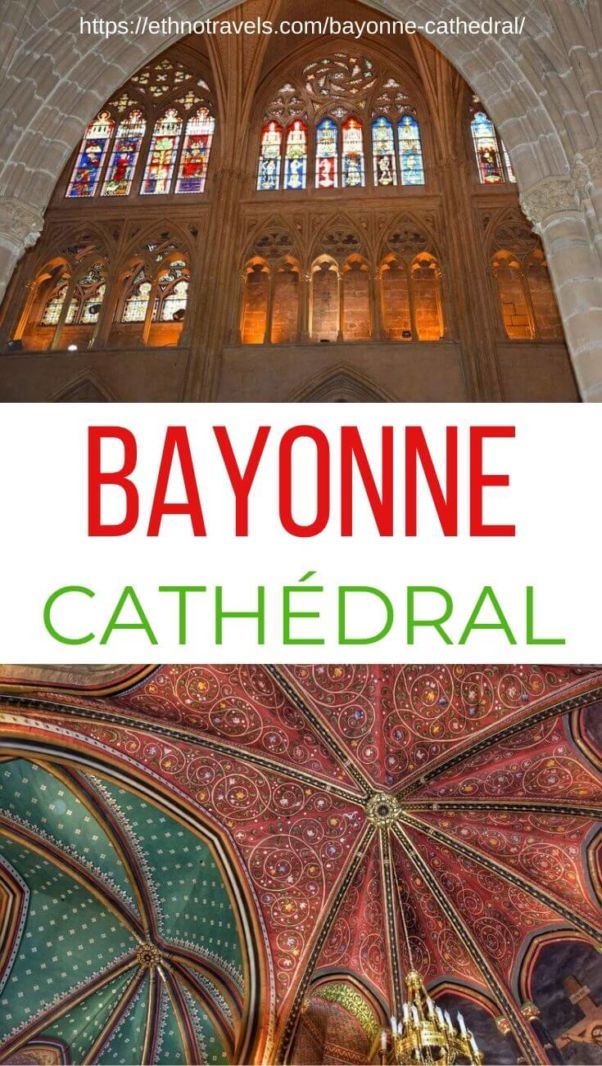Are you visiting the Basque Country soon? You should definitely visit the beautiful Bayonne Cathedral and its cloister, one of the largest in France.
Bayonne, listed as a city of art and history since 2011, has one of the most beautiful cathedrals in France, listed as a UNESCO World Heritage Site since 1998 and a Historic Monument since 1862.
In this article, I’ll tell you:
- the history of Bayonne Cathedral.
- where are Bayonne cathdral and the cloister.
- why you should visit it.
- how to organize your visit
FAQ on Bayonne Cathedral.
– Monday to Saturday: 8am-6.30pm.
– Sunday: 8am-8pm.
– Offices: Monday to Saturday 11.15am-12.45pm (no visits out of respect for the faithful).
No, the visit of the cathedral and the adjoining cloister is free of charge.
The best way to visit Notre Dame de Bayonne Cathedral is to hire the services of a guide who will give you an explanation of the cloister, the cathedral, the architecture of the town and its chocolate-related history. See more ideas for excursions here
Hôtel des Basses Pyrenees (0.24 Km)
OKKO Hotels Bayonne Centre (0.72 Km)
Ibis Styles Bayonne Gare Centre (0.81 Km)
If you visit Biarritz and wish to stay there, you can read my article on the luxury hotels in Biarritz here
The history of Bayonne Cathedral and cloister.
The Cathedral of Sainte-Marie de Bayonne or Notre Dame de Bayonne in its present state was built in no less than 6 centuries. Begun in the 13th century on the site of the former Romanesque cathedral, Emile Boeswillwald, a pupil of Viollet le Duc, added its 70-metre-high spires in the 19th century.
This particular story explains why one can find both Romanesque and Gothic elements. Its dominant style is radiant Gothic (keystones, ogives). In its original XVIth-early XVIIth century appearance, it was surmounted by an 8-sided slate dome in the shape of a bulb.
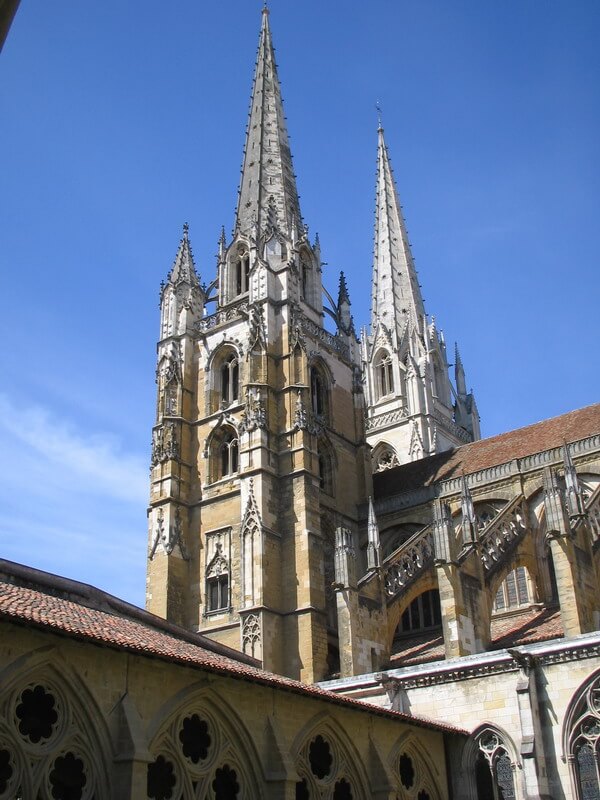
Where is situated Sainte-Marie de Bayonne Cathedral?
The cathedral is located in the historic district of the city, the Grand Bayonne. It was here that the Roman village or castrum, Lapurdum (which will give Lapurdi, the province of Labourd on which Bayonne depends) was located. It is at the highest point of the city (10 metres above sea level), next to the old pillory square.
The cathedral is accessed from the cloister and vice versa. NB: it is better to visit the cloister first, as its opening hours may be random.
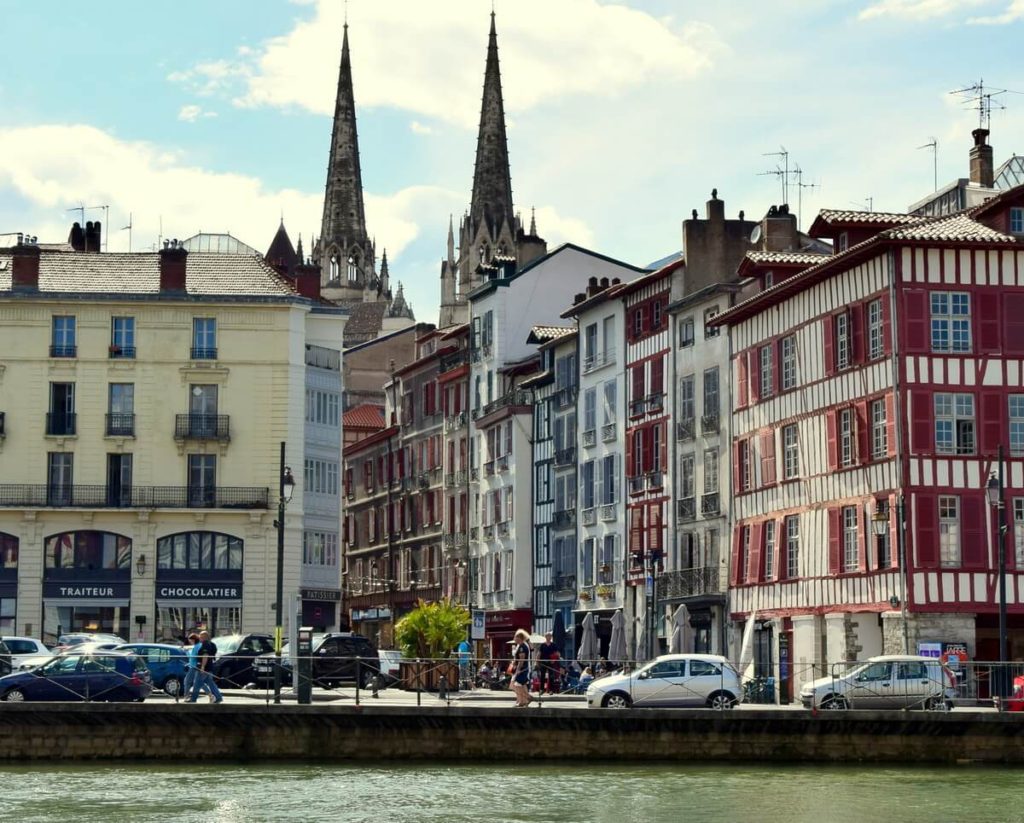
Why you should visit Bayonne Cathedral and its cloister ?
There are many reasons to visit the cathedral and its cloister:
- The cathedral has been classified as a Historic Monument since 1862.
- It has been listed as a World Heritage Site by UNESCO, as part of the Paths to Santiago de Compostela, since 1998.
- The cloister is one of the largest in France.
- The tombs and enfeus (memorials) are very well preserved.
- One can see in the cloister the marks of the French Revolution, vestiges of the very first cloister and marks of paganism.
- The cathedral is very impressive by its dimensions, due to its small width: it is 26 meters high.
- It contains magnificent stained-glass windows, with incredible shades of blue and red, especially in the chapels of the ambulatory (18th century).
- The superb paintings in the 7 chapels of the ambulatory were redone and finished in March 2019.
- The old high altar is made of Carrara marble.
- Above the organ, the rose window of Creation can be seen.
- The pulpit is made of Canary mahogany, its wrought-iron stairs gilded with gold leaf come from the old forges of the Adour.
- The splendid coloured keystones represent the different districts of Bayonne and recall both the past and the present of the city (the 3 leopards symbolising the Anglo-Gascon occupation, the lily for the recapture of the city by the French). To the south-east is the most beautiful, the Bayonnaise Nave, recalling the naval power of the medieval city and the stern rudder created here.
- The restoration of the porch can be dated back to the 19th century thanks to the presence of one of the 4 statues that adorn it.
- The cathedral and the cloister are in the heart of Bayonne, close to the Vauban ramparts, the street of the chocolate Masters, the houses on stilts, the last artisanal Bayonne ham salting workshop, the shops, the town hall, the Nive and the Adour rivers.
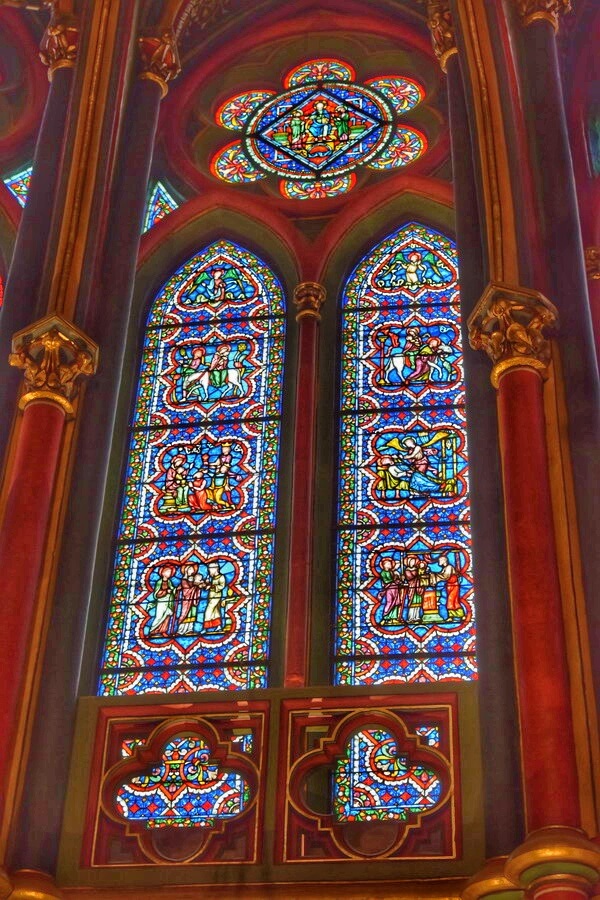
How to organize your visit?
As the cathedral is in the heart of Grand Bayonne, it is very easy to get there on foot from the train station, the tourist office square, Petit Bayonne and all the tourist points of interest in the city.
You can therefore come on foot from the main attractions in the centre of Bayonne.
If you come by car and have difficulty parking, you can park in one of the large car parks on the outskirts of the city, notably at the Glain car park (1€ per day, 1 hour free), then take the free electric shuttle. It will drop you off directly at the cathedral!
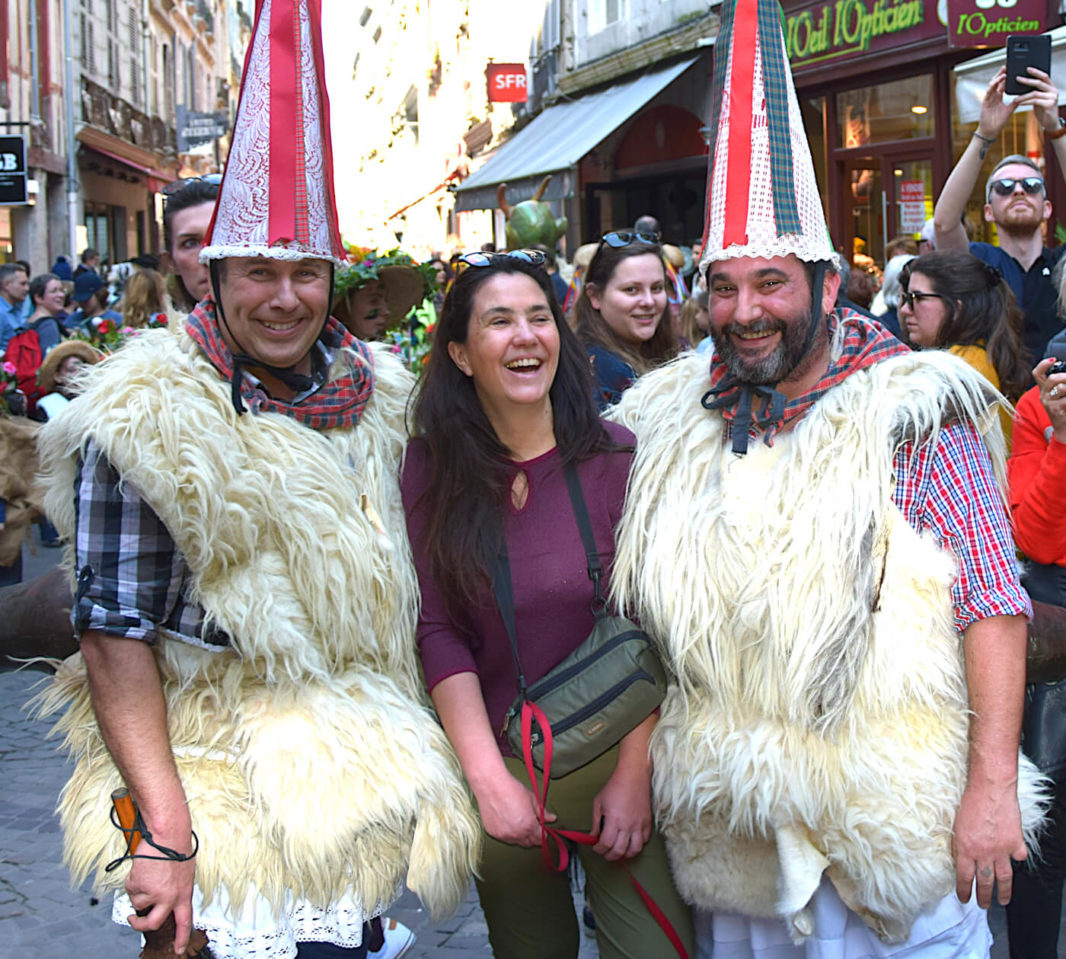
See How I Can Help You Organize Your Tour
Help with the preparation of the tour
Connection with my local contacts
Guiding your group in French or English
Conclusion – Bayonne cathedral.
You now know the history of Bayonne Cathedral and its cloister, where they are located, why and how to visit them.
Have you ever been to Bayonne? Do you have other visiting tips to share? Do not hesitate to share them with us as a comment.
You can read more articles about the Basque Country here and learn all about the Bayonne Chocolate Festival in this article.
Share this article with your family or friends who are planning their next trip to the South of France.
This article contains compensated links. As an Amazon Associate I earn from qualifying purchases. Consult the disclaimer on the site for more information.
Save on Pinterest for later.
